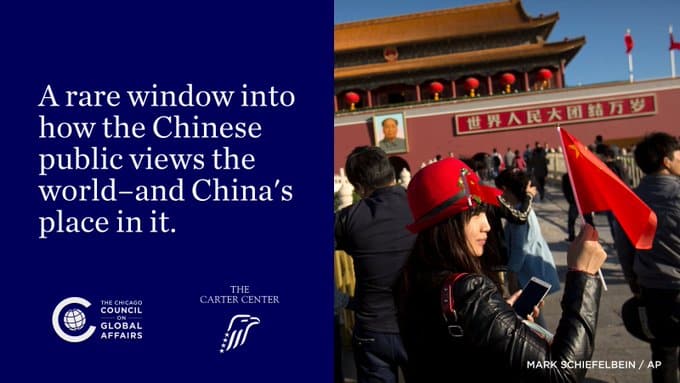‘American Factory’ Doc wins Oscar, highlights tensions and opportunities
What happens when we view US-China relations through the lens of individual workers?
What would you consider as the standout film of this year’s Oscar Awards? Ask around and you may hear people talk of Bong Joon-ho’s Parasite or Greta Gerwig’s Little Women. Yet for those of us interested in US-China relations, another film may have piqued our interest. Julia Reichert and Steven Bognar’s American Factory took home the Academy Award for Best Documentary Feature on Sunday night. The film, produced by Barack Obama’s production company Higher Ground, charts the transition of a former General Motors factory in Moraine, Ohio which is bought by the Chinese automobile glassmaking company Fuyao Glass Industry Group.
The film depicts Chinese Fuyao employees as they come to the factory in Moraine to help teach their new American colleagues the manufacturing process. It highlights equally the moments of collaboration and tension due to different working cultures and expectations—particularly in regard to the calls from Fuyao’s American workforce for high health and safety standards, and the right to form a union.
Good intentions
On the one hand, the documentary highlights the spirit of collaboration which initially appeared to underpin Chinese investment in the U.S.. In the opening frames, a recruiter tells the potential workforce “We have facilities around the world, throughout China, the United States now…what we’re doing is melding two cultures together”. Yet this “melding’ of cultures”ends up being a far more complex and vexing task.
The film charts a host of challenges for the joint U.S.-Chinese venture. The biggest obstacle appears to be the desire of many of the American workers to form a union to encourage better working conditions in the face of increasing reports of workplace injuries. For the factory owner,Cao Dewang, the unionization of the workforce represents a frustrating obstacle in his path to make the factory profitable, telling senior management that, “If a union comes in, I’m shutting down”.
Yet later in the film, his Chinese colleagues reflect on their experiences working in the U.S. so far, telling him, “a lot of things here in the U.S. are different from China”. It is perhaps this opportunity for the Chinese and American workers at Fuyao to reflect and better understand their cultural differences which represents one of the factory’s successes. There are genuine and even inspirational moments of bonding between individuals, such as when American worker Rob Haerr bonds with his Chinese counterpart Wong He. He shares his shock at learning that the Chinese workers had to stay in the U.S. for two years, away from their family, with no extra pay. He confides “that really started making me appreciate what they are doing for us more and more”. Later, Rob reveals that he invited Wong over for a Thanksgiving Meal at his home with his Chinese friends and they also shot guns together and took pictures on Rob’s Harley Davidson. These moments in the documentary not only highlight the strong personal interactions between the Chinese and American subjects, but they also humanize the workers for audiences at home in a relatable way that transcends political and economic tensions.
Despite this growing spirit of personal interaction between many of the workers, it is clear that the success of the factory cannot be built on individual collaboration alone. Structural issues remain—from different expectations regarding health and safety, stricter labor laws in the U.S., as well as the traditional challenges of setting up any new business. These larger issues are reflected in the fact that Fuyao only turned a profit in 2017, three years after it bought the former GM factory site. Moreover, current U.S. CEO Jeff Liu has predicted that profits will be hit this year by a general downturn in the car manufacturing sector signaling that the Fuyao’s American operation may still be prone to cracks.
Shifting perceptions from the ground up
Despite the difficulties Fuyao has experienced operating in the American labor market, its continued presence and expansion to three other sites in the U.S. may serve as an example of how Chinese investment in American industry can build trust and collaboration from the ground up. Could Chinese investment in U.S. industry eventually lead to a positive shift in perception? Cao Dewang later in the film touches on this point, arguing “the most important thing is not how much money we earn, but how this will change American’s views of the Chinese”.
If Cao Dewang aims to shift perceptions, then it would appear the film is a key part of his strategy. The filmmakers were invited to make the film at Cao’s request, but the directors insist they remained independent and objective. At a time when media reports about China and the U.S. are focused on conflict and tensions, American Factory brings the narrative of investment closer to home by showing the opportunities for job creation and the challenges of different working cultures. In humanizing the often-contentious topic of trade, without mitigating or attempting to cover up the difficulties, American Factory, therefore, avoids the sensationalism that often permeates the US-China narrative.
Chinese-American narratives on screen: An olive branch?
In this way, American Factory is arguably the latest attempt by American and Chinese media professionals to reshape U.S.-China perceptions through cross-cultural film projects. For example, directors Julia Reichert and Steven Bognar have stated that a large part of the film’s success was thanks to their collaboration with Chinese film directors Yiqian Zhang and Mijie Li, which allowed them to capture the stories of the Chinese workers in the film, alongside giving them a valuable insight into Chinese culture.
In doing so, American Factory follows in the footsteps of other cross-cultural film projects which have aimed to highlight Chinese American experiences. They have often done so through making informal links with filmmakers who are part of the Chinese American diaspora. One such example is Lulu Wang’s recent award-winning film The Farewell which charts the culture clash of the Chinese American experiences of family cohesion and mourning and is based on director Lulu Wang’s own experience as a Chinese-American and the death of her grandmother. The film, which picked up numerous awards including the Sundance “Audience FavouriteAward”—focuses on the challenges facing Chinese Americans when they visit their family members in China. In highlighting the human side of U.S.-China relations, it has been suggested that it could act as the ‘Olive branch the U.S.-China culture war needs.”
Perhaps American Factory represents another olive branch. By bringing attention to the human interactions at the ground level of U.S.-China relations, it suggests there is a lot that we can learn from the tensions and struggles depicted. Rather than hypothesizing about China’s rise through the lens of International Relations theories, perhaps we should look to the workers in American Factory as a microcosm for navigating the broader U.S.-China bilateral relationship at all levels—government and non-government. It begs the question: What happens if put the everyday people—who stand to gain from increased investment and the exchange of ideas and culture—back at the heart of the US-China conversation?
By Iain Millar. Spring 2020 China Program Intern








